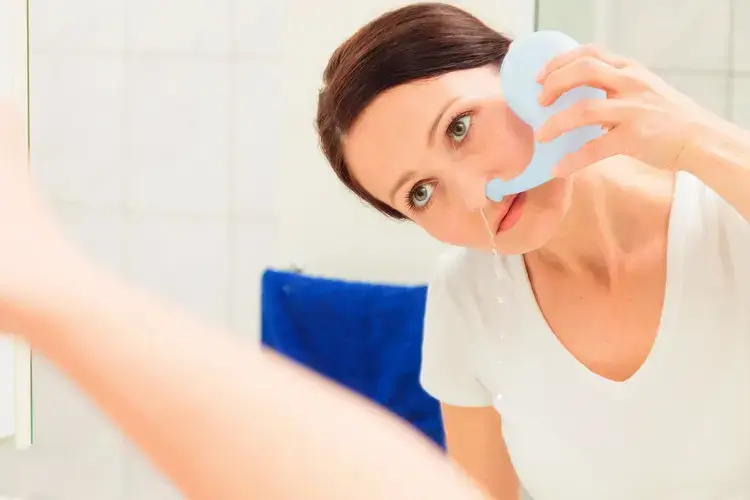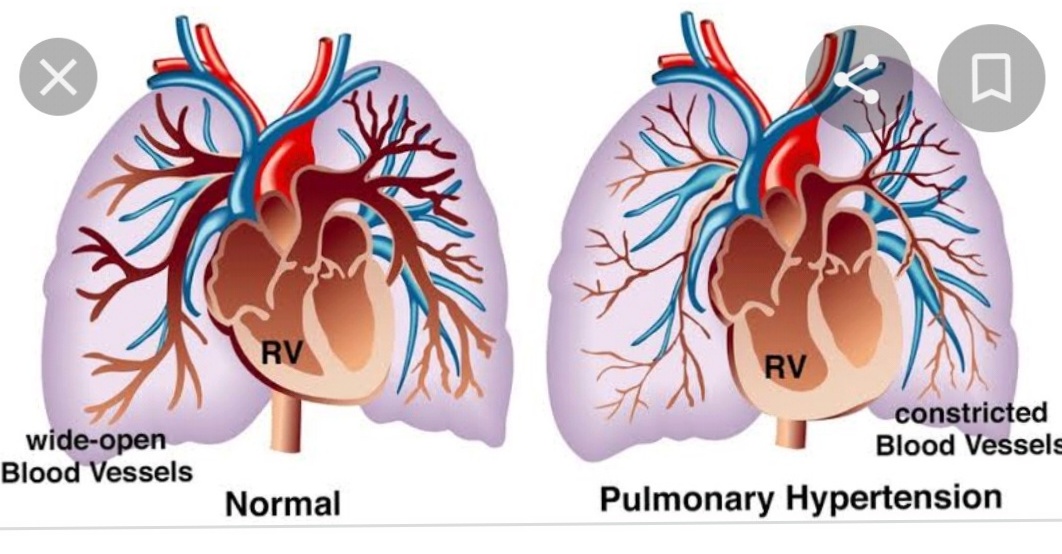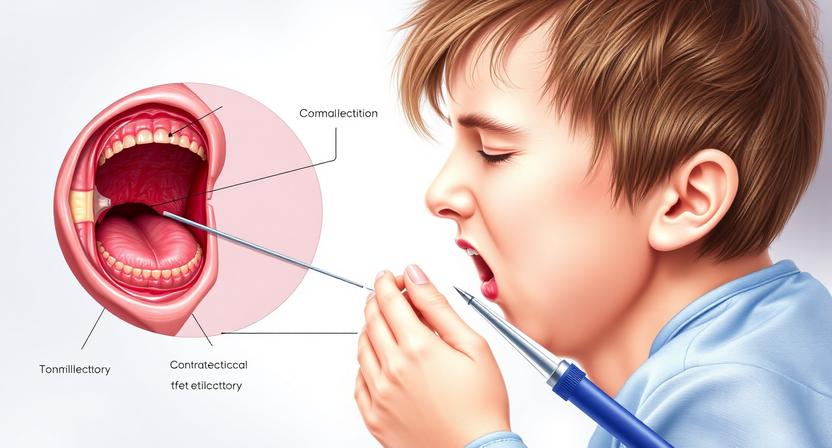Sinusitis Nasal Washing: The Most Effective Home Remedy ENT Doctors Recommend
ENT physicians strongly advise using a saline solution to rinse the nose at home as a treatment for sinusitis. Using a Neti pot or saline spray with a well-prepared saline solution is a simple and efficient method of treating sinusitis symptoms. This method, also known as nasal irrigation, helps to clear nasal passages, lessen congestion, and ease sinus pressure and discomfort.
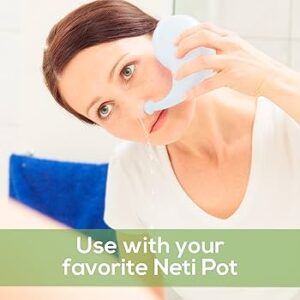

Here’s how to perform a nasal wash and why it works:
Effectiveness:
Opens Nasal Passages:
Flushing out irritants, allergens, and mucus from the nasal passages is made easier by saline solution nasal irrigation.
lessen traffic:
Rinsing the nose can greatly lessen nasal congestion and increase airflow by eliminating these toxins.
Alleviates Sinus Pressure:
The discomfort and pain associated with sinusitis can be relieved by unclogging the sinuses.
Keeps nasal passages hydrated:
During chilly, dry weather, a saline solution can be very useful in hydrating dry nasal passages.
Nasal Irrigation
One simple and secure method of flushing your sinuses is nasal irrigation. It may help alleviate symptoms associated with a sinus infection, allergies, a cold, or other upper respiratory issues. If you want to try nasal irrigation, pre-filled containers, rinse bottles, and neti pots are all fantastic choices.
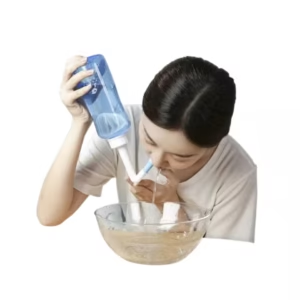
What exactly is nasal irrigation?
You can rinse your sinuses using nasal irrigation, which is an at-home therapy. Your sinuses are hollow, air-filled spaces behind the bones of your face. They are often left open to allow for easy breathing. However, mucus (snot) can block your nasal passages if your sinuses get irritated or inflamed.
The obstruction is rinsed away by nasal irrigation using a saline solution (a combination of water and salt chloride) via a neti pot or rinse bottle. The mucus causing the blockage is thinned by nasal irrigation. It rinses off the materials that are causing the inflammation.
What kind of nasal irrigation works best?
Most drugstores and pharmacies sell the items for nasal irrigation over the counter. A saline solution and a vessel for delivering it are all you need. All containers marketed for nasal irrigation purposes perform equally well. Select the container that you find most enjoyable.
Containers include:
Neti pots, which let you pour saline into your nose like tea being poured from a teapot.
Squeeze bottles for rinsing your nose.
Containers with unique applicators that are already filled with a saline solution.
What are the benefits of rinsing your nose?
By removing mucus and rinsing out pathogens, allergens, or other debris, nasal irrigation is effective. Pathogens are made up of germs, such as bacteria and viruses. Pollen, mold, pet dander, dust, and dirt are all allergens. They irritate your sinuses and induce symptoms like when these materials become trapped in your nose:
- a runny or blocked nose.
- Sneezing or having an itchy sensation in your nose.
- Having trouble breathing.
Among other ailments, nasal irrigation can help alleviate symptoms related to allergies, sinus infections (sinusitis), the common cold, the flu, and COVID-19.
Who shouldn’t use nasal irrigation?
Not everyone should use nasal irrigation. You shouldn’t attempt nasal irrigation if you:
- suffer from an ear infection.
- Experience pressure in one or both ears.
- Have a completely obstructed nostril.
- have recently undergone surgery on your sinuses or ears.
- Ask your doctor whether nasal irrigation is safe for you if you have any concerns.
What type of water can you use to rinse your nose?
It’s important to use water that is free of irritants or pathogens that could affect your sinuses. Trace quantities of minerals, bacteria, pesticides, and other compounds can be found in most water. These compounds should not be exposed to your sinuses while you are irrigating your nose.
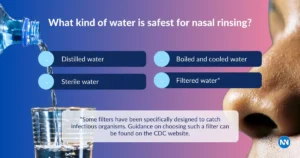

Use this instead:
Distilled or sterile water: Distilled water is cleansed. It has undergone a procedure to eliminate potentially irritating substances and illness-causing bacteria from your nasal passages. Before making a purchase, check the water for the term “distilled.”
Boiled water: Boiling water eliminates dangerous microbes like bacteria. To make sure all the germs are killed, boil water for five minutes. Cover the container if you can’t use it right away. Use it within 24 hours.
Water filters: Some water filters can eliminate dangerous bacteria and make water safe to use. The Centers for Disease Control (CDC) provides specific instructions regarding which filters are safe for nasal irrigation.
Details of the Procedure
DISCLAIMER-Some patients go to net and directly take treatment from there which can lead to catastrophic consequences-Then- Many people ask then why to read all this text -the reason is that it helps you to understand the pathology better ,you can cooperate with treatment better ,your treating physician is already busy with his patients and he does not have sufficient time to explain you all the things right from ABCD ,so it is always better to have some knowledge of the disease /disorder you are suffering from.
How do you perform nasal irrigation?
Wash your hands with soap and water first. If you’re using a neti pot, a nasal rinse bottle, or any other container that doesn’t come with a pre-filled solution, wash the container. Irrigate over a basin to facilitate cleaning.
The procedure for washing the nose is as follows:
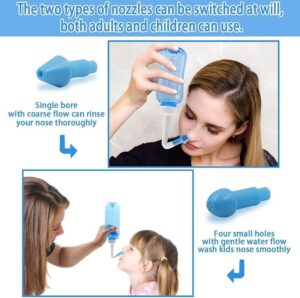

Mix a saline solution (salt and baking soda) with distilled or boiled (and cooled) water to make the mixture. The American Academy of Allergy, Asthma & Immunology (AAAAI) advises a certain formula in accordance with the American Academy of Allergy, Asthma & Immunology.
- Choose Your Method: A nasal rinse kit, a squeeze bottle, or a Neti pot are all options.
- Put Yourself in Place: Tilt your head to one side while leaning over a sink.
- Irrigate: Carefully put the nozzle into the top nostril, allowing the solution to pass through the nasal passages and out the bottom nostril.
- Keep Breathing Through Your Mouth: During irrigation, continue to breathe via your mouth.
- Dry and Repeat: Repeat the procedure on the other side, then softly blow your nose to get rid of any remaining solution.
Get the nasal irrigation solution ready. If the container you’re using came with saline powder, follow the instructions to make the solution. Combine one or two cups of distilled boiled water with ½ to ¼ teaspoon of non-iodized salt to create a homemade remedy. Stay away from iodized salt, even table salt. Boil for five minutes if you’re using boiled water.
Prepare the container. Pour the saline solution into the container that you will use to rinse your nose. If using boiled water, let it cool until it is lukewarm (not too hot, not too cold) before using it.
Get in place. Bend over the sink and gaze downward. Tilt your head so that one ear is near the sink (as if you were looking for a noise coming from the drain) and the other is near the ceiling. Refine your stance by considering how you want the water to flow. Consider water pouring out of the top nostril and out of the bottom one.
Irrigate. Use your mouth to breathe. Put the container’s tip or spout into your top nostril until it makes a soft seal. Tilt the container or squeeze the bottle to allow the water to flow through your top nostril and into your bottom one. You will notice the water dribble as it travels downward and spills into the sink. Continue until the solution is finished.
Blow your nose. Forcefully breathe air through your nose to remove any remaining mucus or solution. You can blow your nose into a tissue or over the sink.
Repeat these procedures on the opposite side to irrigate your other nostril.
After I finish irrigating, what should I do?
Throw out the pre-filled container or wash the neti pot or rinsing bottle after use. Verify that your container is dishwasher-safe by inspecting the packaging. If it isn’t, you may wash it in the sink and let it air dry on a spotless towel.
Benefits / Risks
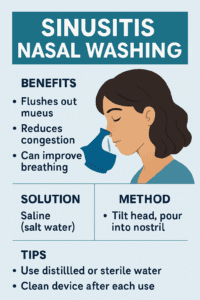

What are the advantages of nasal irrigation?
An inexpensive and simple method for alleviating unpleasant symptoms associated with common upper respiratory infections and allergies is nasal irrigation. After only one usage, several individuals who attempt nasal irrigation experience relief. According to studies, nasal irrigation improves symptoms in both children and adults with allergies for as long as three months.
What are the adverse effects of nasal irrigation?
There are typically no adverse effects.
Some individuals feel a burning or stinging sensation in their nose after performing nasal irrigation. If this occurs, use less salt in your saline solution. Additionally, before utilizing boiled water, ensure that it has cooled to lukewarm temperature.
What are the potential dangers or complications associated with irrigating the nose?
When performed correctly, nasal irrigation is safe.
Using contaminated water poses a small risk of infection. News articles about “brain-eating” germs are frequently cited by those who are reluctant to utilize nasal irrigation. If you eat the amoeba Naegleria, you may contract primary amebic meningoencephalitis (PAM), a potentially fatal brain infection. The majority of PAM cases are caused by swimming in water that contains the amoeba.
Using distilled or boiled water can shield you from Naegleria, but the majority of incidents related to nasal irrigation involve people who used untreated tap water.
When should I schedule a visit to my doctor?
If nasal irrigation isn’t alleviating your symptoms, if they’re getting worse, or if you experience new symptoms, such as a fever or headache, make an appointment with your healthcare provider.
Is it acceptable to rinse your nose daily?
While you have symptoms, you may do a nasal rinse once or twice a day. In order to avoid sinus infections or allergy symptoms, some asymptomatic individuals irrigate their noses once or twice a week. When you use distilled or boiled water and make sure to clean your containers thoroughly, nasal irrigation is a safe practice to do every day.
Significant Considerations:
Use Sterile Water:
To prevent bringing harmful bacteria into the nasal passages, always use distilled or boiled and cooled water.
Correct Hygiene:
After each use, make sure to completely air dry your Neti pot or nasal rinse bottle after cleaning it well.
Pay Attention to Your Body:
Discontinue the irrigation and see a doctor if you have any pain or discomfort.
Talk to a doctor:
It’s important to see an ENT specialist for an accurate diagnosis and treatment plan if your symptoms continue or get worse.
If any patient has any ENT -Ear nose throat problems and requires any , consultation ,online consultation ,or surgery in clinic of ENT specialist Doctor Dr Sagar Rajkuwar ,he may TAKE APPOINTMENT BY CLICKING ON THE LINK GIVEN BELOW-
Clinic address of ENT SPECIALIST doctor Dr Sagar Rajkuwar-
Prabha ENT clinic, plot no 345,Saigram colony, opposite Indoline furniture Ambad link road ,Ambad ,1 km from Pathardi phata Nashik ,422010 ,Maharashtra, India-Dr Sagar Rajkuwar (MS-ENT), Cel no- 7387590194 , 9892596635

